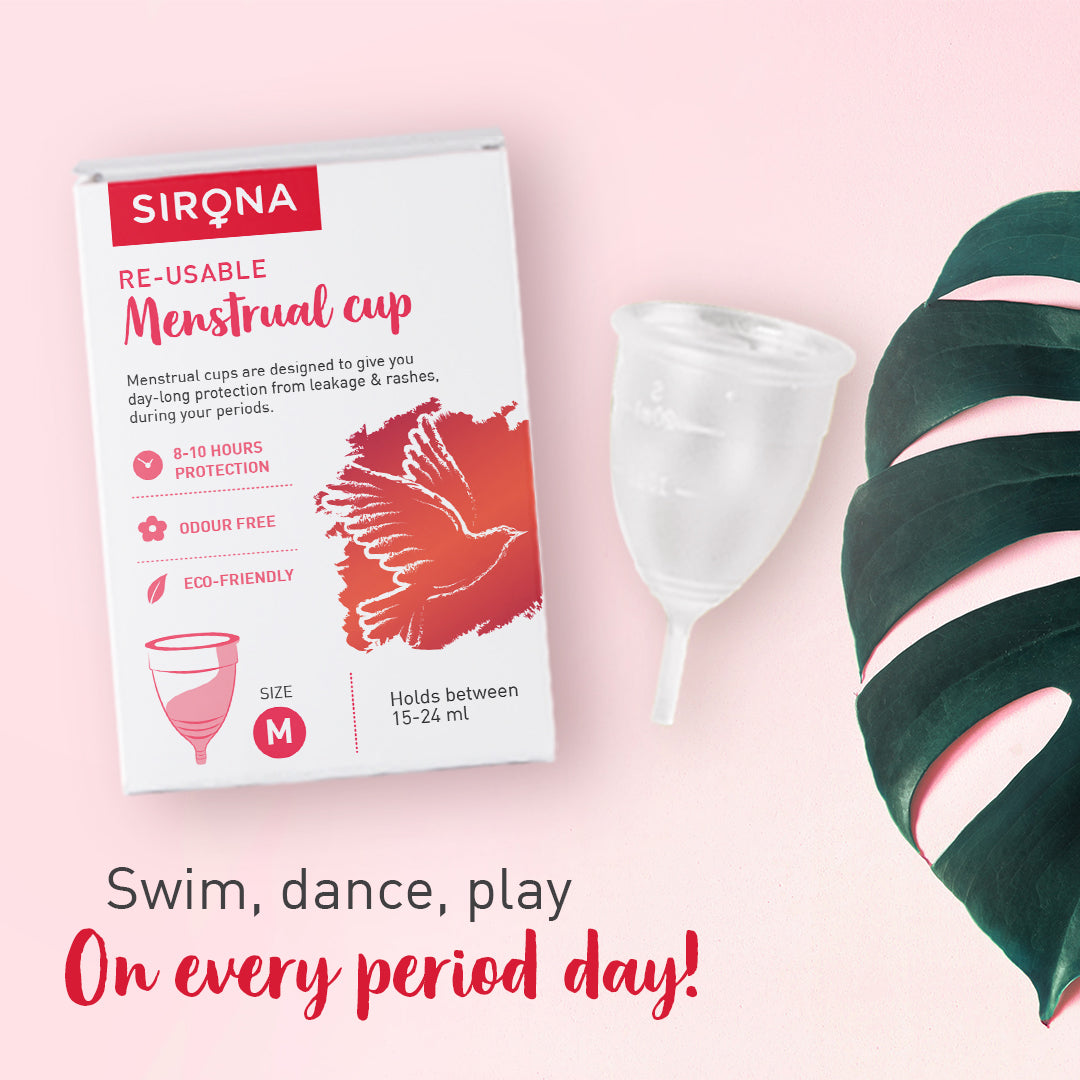Menstrual Cup Guide- Everything You Need To Know
Every year India produces approximately 9000 tonnes of sanitary waste, which is about 90% as heavy as the famous Eiffel Tower. Just like the famous French structure, our sanitary “footprint” is going to far outlive our own lives, and remain there for the generations to come.
It is now becoming common knowledge that our pads will spend the next hundreds of years breaking down in landfills or oceans. Contrary to what you may think, this is not the end of the story.
Unbeknownst to many, from the landfills and the oceans, the pads make a return in our lives in the form of microplastics and chemicals. In this way, hidden from our sight, we find them in our homes, food, air, and water. At the end of the day, the final destination of disposable pads is in our own bodies.
In such a scenario, menstrual cup holds utmost importance. Let us know why.

What Is A Menstrual Cup?
It is a small, flexible, funnel-shaped reusable feminine hygiene product which is made of rubber or medical grade silicone. It is a cup inserted into the vagina to collect period fluid during the menstrual cycle.
Cups can hold more blood than other products, leading many women to use them as an eco-friendly alternative to tampons. Depending on your flow, you can continue wearing a cup for as long as 12 hours.

How to know the right Menstrual Cup Size for you?
To know the right menstrual cup size, you should consider the following:
- your age
- length of your cervix
- whether you have a heavy flow or not
- firmness and flexibility of the cup
- cup capacity
- the strength of your pelvic floor muscles
- if you’ve given birth vaginally

How to insert a Menstrual Cup?
Follow these steps to use a cup:
- Wash your hands thoroughly.
- Fold the menstrual cup in C-fold or punch down fold.
- Hold the folded sides firmly in between your thumb and forefinger so that the curved edge is facing away from your palm
- In a comfortable position (while standing or squatting) and with your vaginal muscles relaxed, gently insert the cup into your vagina. It should be at a few inches below your cervix.
- Rotate the cup once it is in your vagina. It will spring open and create an airtight seal which stops the leaks.
- How to take a Menstrual Cup out?
- To take a menstrual cup out, follow these steps:
- Wash your hands thoroughly.
- After placing your index finger and thumb into your vagina, pull the stem of the cup gently until you can reach the base.
- Pinch the base of the cup lightly to release the seal and pull down for removal of the cup.
- Once the cup is removed, empty the contents into the sink or toilet.

Advantages Of Menstrual Cup
Budget-friendly: You pay only once for a reusable menstrual cup — unlike tampons or pads, which have to be continually bought. Some cups last for as long as ten years.
Safer: Since menstrual cups do not absorb but collect blood, you’re not at risk of getting a toxic shock syndrome (TSS) associated with tampon use.
Can hold more blood: A menstrual cup can hold about one to two ounces of menstrual flow. Tampons, on the other hand, can hold up only third of an ounce.
Eco-friendly: Tampons, pads and panty liners along with their packaging and individual wrapping generate more than 200,000 tonnes of plastic waste per year – pads are around 90% plastic! Reusable menstrual cups can last as long as 10 years, which means you’re not contributing more waste to the environment.
Active lifestyle: Enables you to swim even during periods
How to Clean a Menstrual Cup
It is recommended that you sterilize your menstrual cup before and after every cycle. To sterilize, simply rinse it normally and then, place it in a pot of water and boil it. Ensure it does not sink to the bottom (as it could melt if it comes in contact with the saucepan base). Boil for 2-10 minutes and then remove and allow it to dry.
During your cycle, after removing the cup and emptying its contents, wash the cup under cold or warm water and then re-insert it. You may try using a scent free, water-based (oil-free) soap or one of the specially designed menstrual cup wipes or wash options.
Once it is dry, store the cup in the accompanying carry pouch.





